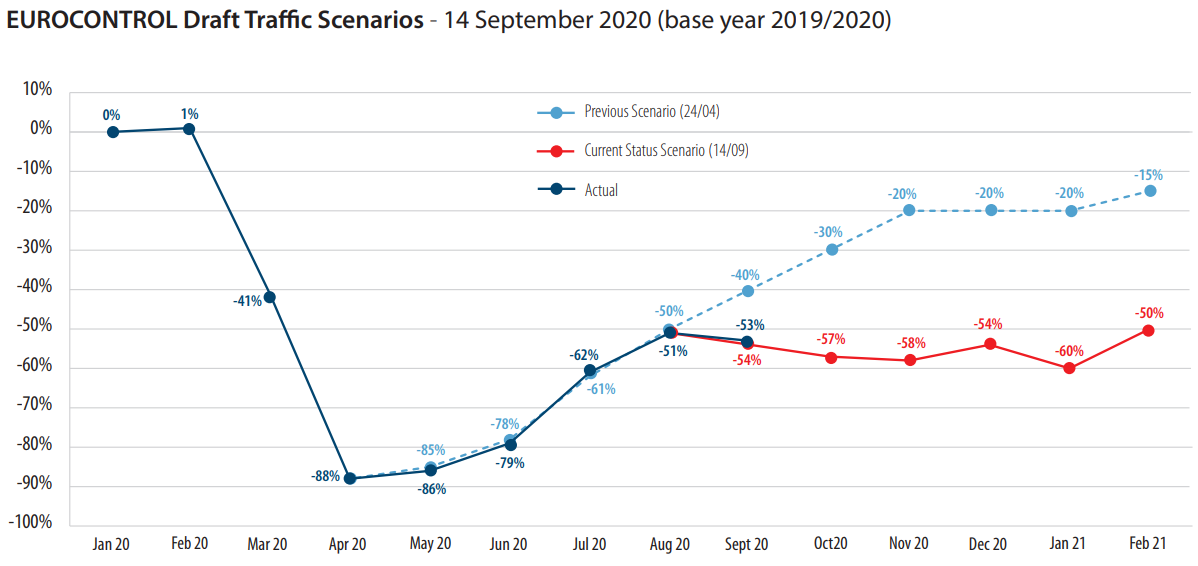In order to reduce the impact of Covid-19 measures on airport performance, and so contribute to aviation's overall recovery from the pandemic, airports need to focus on reducing the impact of space constraints and national authorities need to harmonise measures across EU Member States, claims a study recently published by European air navigation provider EUROCONTROL.
The study, commissioned from the Airport Research Center (ARC), highlights that airports need to understand the impact of implementing Covid-19 measures on airport performance. It provides airports with a detailed set of process assessments indicating where they need to focus as traffic recovers. It particularly highlights "the vital importance of harmonisation of measures for air travel, key to passenger confidence and efficiency," acknowledges Eamonn Brennan, director general of EUROCONTROL.
In collaboration with European airport body ACI Europe and other industry partners, including four airports/airport groups (Paris CDG, London Heathrow, Stuttgart and Swedavia), as well as the support of IATA, the ARC study used simulations to assess the impact of new measures such as increased sanitisation and social distancing, on terminal operations, in particular passenger journey time, terminal throughput and boarding gate processing capacity.
The findings have highlighted a significant additional pressure on airport resources. For departures it illustrates that 50% more space is required at check-in, 100% more space is needed at security control and 35-50% more space is required at boarding gates and up to ten minutes additional time will be added on average to the departing passenger journey.
On the arrival side it found that 100% more space is required at immigration, 30-50% more space is needed for baggage reclaim and that between five and 20 minutes additional time would be added to the arriving passenger journey. Further, additional measures will be needed to mitigate impact if health checks are required for arrivals and/or transfers.
The study recommends that airports focus on key limiting components - security control/immigration in terms of throughput challenges, and boarding gates and baggage reclaim in terms of space constraints. Worryingly, it warns that airports already congested before the Covid crisis can expect to reach their maximum saturation capacity at just 60-75% of their peak 2019 traffic.
As such, and to avoid further delays and conflicting requests to passengers, it calls for greater harmonisation in terms of Covid measures supporting passenger safety and re-building trust is essential across EU Member States.
Airport capacity issues are set to become a major constraining factor for the system when demand for air traffic picks up. Facilities have been adapted heavily to adapt to changing passenger requirements, new traveller demographics and enhanced security needs while at the same time supporting increased traveller volumes. Another significant shift in the modelling is now on the cards, but many short-term mitigation measures will certainly need to be incorporated at many airports to ensure that when travellers feel happy to take to the air that they are ready to welcome them in a safe manner.
You can download the detailed report here: Impact assessment of COVID-19 measures on airport performance
The recovery of air transport has certainly stalled over the last few weeks and EUROCONTROL has now revised downwards its draft traffic scenarios in Europe up to Feb-2021. Under its new 'Current Status Scenario', the total number of flights expected in Europe is anticipated to be -55% lower than in 2019, a drop of six million fewer flights, or a further one million reduction in European flights than previously anticipated.

"We're going backwards now and it's really worrying for the entire industry," says Mr Brennan. He explains that there's "a lack of coordination between states on how to manage air travel" and that there's "a lot of confusion and very little passenger confidence". This is all obviously occurring against a backdrop of new outbreaks of Covid-19 infections across many areas of Europe.
This is a baseline projection and Mr Brennan warns that things could actually get worse if states continue to impose blanket restrictions and quarantine measures, an approach he describes as "killing the travel and tourism industry". However, things could also improve if there was more coordination between states on how best to handle air travel through harmonised testing and common epidemiological assessment criteria that would "give more predictability for passengers, airports and airlines," he says.